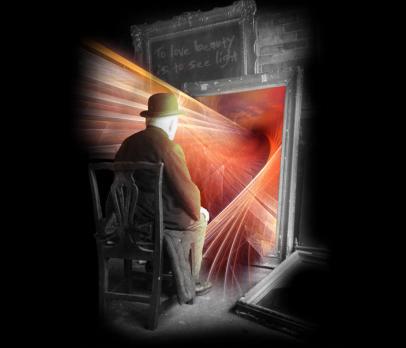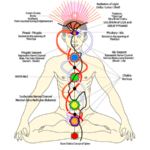Ancient Persian Theology: Zarathustra and the Avesta

In the 2nd and first millennium BCE, some 1500 years before Christianity and the Roman Empire spread throughout the Mediterranean and Middle East, we see evidence of the prevalence of a faith that has come to be known as Zoroastrianism, a term which is a Greek transliteration of the name of the prophet to which the tradition is attributed in antiquity, i.e. he who is most commonly known today as Zarathustra but who was called Zoroaster in the (English transliteration of) Greek or Zartosht in the native Persian.[1] Zarathustra is to the ancient Persians what Moses is to the ancient Hebrews, the founder and expositor of divine revelations which provide the basis of their respective theological traditions, the foundations of their respective mythos.
What we know of Zarathustra primarily comes from the Gathas, 17 hymns of poetic verse written in Old Avestan which are attributed to him. In Zoroastrianism, not only do we find very strong corollaries to Judeo-Christian themes and motifs, but also strong similarities to Hellenic theology and philosophy, along with many similarities to the Indo-Aryan tradition as reflected in the Vedas written in Sanskrit just to the east of ancient Persia which of course provide the basis for Hinduism and in turn Buddhism.
The earliest evidence of Zoroastrianism from the historical and archeological records can be found in not only the extant writings and inscriptions from the ancient Persians, but also from the ancient Greeks as well, which clearly had close ties with their Persians to the East (hostile or otherwise) and can be seen as indirect sources of the nature of the Persian people and their underlying faith, which by the time of the Achaemenid Empire (c. 550-330 BCE) had become the state religion more or less.
We see references to the grace and protection of Ahura Mazda, the one and true God of the Zoroastrian faith, by several of the extant inscriptions from Kings of the ancient Persian/Achaemenid Empire, an empire whose influence held sway over much of the Middle and Near East from the middle of the 6th century BCE to the latter part of the 4th century BCE. References to Ahura Mazda are found from inscriptions from the era of Darius the Great (c. 550-486 BCE)[2], the infamous Xerxes who succeeded Darius (519-465 BCE), and then even in from the 11th king of the Achaemenid Empire Artaxerxes III (c 425-338 BCE). We also see references to the Zoroastrian faith in the ancient Greek historical literature, starting with references to the Persian peoples and customs in Herodotus’s Histories (c. 484-425 BCE), an excerpt from the writings of Alcibiades written sometime after 374 BCE, a citation from Theopompus (c. 380–315 BCE), and even a reference to the Zoroastrian faith and its parallels to the Greek pantheon by Aristotle in his first book of On Philosophy.[3]
All of these references point to the existence and prevalence of the worship of a god the Persians called Ahura Mazda, which we sometimes find referred to in its transliterary form the ancient Persian Pahlavi script as Ohrmazd, throughout the area of Persian (Iranian) influence from the 6th century BCE onwards. This deity was associated to the Zeus of the Greeks (“Horomazes” or “Oromasdes” in the direct Latin transliteration of the Greek), whose evil counterpart Anra Mainyu, or Ahriman in the older Pahlavi script and Areimanus in Greek. Aristotle equates Areimanus with Hades, and speaks to the existence of a prophet that the Greeks called Zoroaster from which the faith emerged or at least was inspired, and whose faith was taught and practiced by a priestly class that the Greeks referred to as the Magi, a word that came to be associated with astrology and magic in general (from which the English word “magic” derives), and whose usage can be found even in the New Testament associated with the birth of Jesus.
The written tradition surrounding Zarathustra, at least the documents that survive down to us, are not compiled until the middle of the first millennium BCE or so, and came down to us through a fairly circuitous and perilous journey that has unfortunately left most of the literature buried in the tombs of history. What does survive has been passed down through several different transcription efforts across many centuries leaving us today with copies of manuscripts that were most likely originally written down in the 4th or 5th centuries CE, while the manuscripts themselves which we have access to are from no earlier than the 14th century CE. Only the material written in the Avestan script, a derivative of Pahlavi designed specifically to transcribe the Avestan language, is considered part of the Avesta proper, and of that literature some is written in Old Avestan or “Gathic”, taking its name from the Gathas which form the core part of the Yasna, the name given to the primary liturgical or canonical collection of Avestan texts which are recited during Zoroastrian worship and ritual, i.e. referred to general as Yasna. The Gathas are the only part of the Avesta that is attributed directly to Zarathustra himself, and the rest of the Yasna are written in what is called Younger Avestan, a later derivative of the Old Avestan language.[4]
The Zoroastrian faith, again akin to the Hindus and probably reflective of many of the lost religious practices and rituals by priests and shamans from antiquity, was characterized by the belief that precise pronunciation and annunciation and ordering of words and hymns, as well the practice of accompanying ritualistic specificities, was required in the practice of Zoroastrian ritual, deviation from which would leave the rituals bereft of potency. These rituals were designed to produce higher states of consciousness, to commune with the divine spirit in some form or another, as clearly indicated by the association of specific hymns (yajña in Sanskrit and yasna in Avestan) with specific Gods or Goddesses. Couple this with the importance of adherence to the exact pronunciation and wording of the hymns themselves, along with the following of the exact steps of a given ritual and/or prayer which may involve some sort of food or animal type of offering (soma for example) and what you have is that throughout Ancient Greece and the and all the way to the Far East was a common practice of ritual that were designed to yield a specific state of consciousness.
Ceremony was probably the best English word to translate this idea, except this don’t imply the clear objective of communion with the divine which seemed to be so very evident in these ancient traditions, traditions which not only had detailed rituals which were described, canonized and passed down via oral tradition over the course of many centuries, millennia in fact, but also had detailed cosmologies which outlined the specific context within which the specific aspect of the divine which was the object of these rituals was to be viewed in the total cosmic order of the universe, an order to which the individual participant, mankind itself even, was being identified with in the act of ritual itself.
In this context then, perhaps our understanding of the Greek poetic tradition, which was steeped in this idea of ymnos, was inadequate or incomplete to some degree. Perhaps the Greek poetic tradition, the very same one that the Socratic philosophical tradition as well as the intellectual tradition represented by the Sophists sat in contrast to and to some extent rose up against, was in antiquity steeped in ritual and chanting and the production of hypnotic/ecstatic type states by the following of the rituals and practices that were very similar to those described in the Rigvéda and the Avesta. Perhaps this is a better description of some of the practices of the so-called mystery cults that are purported to have existed in ancient Greece – of which Orphism was one prominent example but also the cult of Dionysus was another.
While this is speculation to some degree no doubt, if the connection between these ancient practices is established and presumed given the shared and common ancestry of the writing systems themselves that the respective civilizations used and the common term or word that they used for such an important socio-theological practice, one could perhaps glean greater understanding of what might have been taking place in these ancient Greek mystery cults which were shunned by the Greek philosophers and their successors in the Mediterranean by looking at the (more archaic and better preserved) rituals that were practiced to the East. In other words, extrapolating from what we know about the underlying practices and purpose of the Vedic (now Hindu) ritualistic practices that have survived down to us today, as well as the corresponding rituals in the Zoroastrian tradition which also still survive, each of which is ultimately designed for communion with the divine, or some specific aspect of the divine, and underpinned by a particular practice of yajña or yasna, we can perhaps gain a better understanding of what was taking place in these ancient Greek mystery cult traditions which predate the invention and prevalence of writing in the geographic regions within which these rituals were practiced.
Accounts of modern scholars date the contents of the Avesta as indicative of hunter/gatherer and nomadic societies that are consistent with archaeological findings in Near East at the turn of the first millennium BCE, centuries before the Persian Imperial period and at least a thousand years before the language was written down. The oldest portion of the Avesta is the Gathas, which are ascribed as divine revelations of the prophet Zarathustra himself, in much the same way as the Pentateuch is ascribed to Moses. The Gathas describe a society of consisting of priests and herdsmen/farmers, a nomadic culture with tribal structures organized at most as small kingdoms. This contrasts sharply with the view of Zoroaster having lived in an empire, at which time society is attested to have had a tripartite structure with the addition of a solider and warring class to the priests and nomad/farmers, providing evidence for the origins the Zoroastrian scriptures dating back into the 2nd millennium BCE prior to the imperial age of the Persians despite this society having the first known reference to Zoroastrian faith.
What we know about Zarathustra himself is known through the Zoroastrian texts themselves and through no other source other than brief references by later historians. What we can gather from these texts is Zarathustra, if he actually existed, was in all likelihood born in Northeast Iran or Southwest Afghanistan into a Bronze Age culture marked with polytheistic religious beliefs as were common in those ancient times, a culture that included rituals of animal sacrifice and the use of hallucinogenics for spiritual awakening, the latter practice of which could be considered similar in many respect to shamanic rituals of the Native American populations of more modern times which we may be more familiar (shamanism), and is the same type of pre-urban, hunter-gatherer societies and practices that are described in the earliest parts of the Vedas, texts which are identified with the Indus Valley region which is just East of ancient Persia (modern Iran).
What is clear from the ancient texts is that Zarathustra to some extent rejected the religion of the Bronze Age Iranians with their many gods and oppressive class structure, marking a fairly significant divergence from the standard practices and social structure of his time and providing the foundations of perhaps the first truly monotheistic faith, unifying the various notions of divinity found within this pantheistic tradition into one all-encompassing deity or principle which came to be known as Ahura Mazda, or Ohrmazd in Old Avestan . So although a precise date of the founding of Zoroastrianism and its original prophet Zarathustra is uncertain, as well as of course is whether or not he actually existed as an historical figure, Old Avestan’s close ties with Vedic Sanskrit combined with the life and times that are described within the oldest Zoroastrian liturgy mapped with archeological evidence put the date of the origins of the oldest parts of the Avesta somewhere between 1500-1100 BCE.
Other notable Zoroastrian texts which were written from the 9th to the 12th centuries CE in Middle Persian written in Pahlavi are the Dēnkard or “Acts of Religion” which is a compendium of Zoroastrian beliefs and customs including an historical narrative of the Avesta itself, the Bundahishn or “Primordial Creation” which contains a detailed account of Zoroastrian cosmogony, the Mainog-i-Khirad or “Spirit of Wisdom”, a religious conference on questions of faith, and the Arda Viraf Namak (“Book of Arda Viraf”), which is especially important for its views on death, salvation and life in the hereafter. Each of these texts albeit written after the advent and widespread adoption of Christianity and Islam, still preserve much of the still existent and practicing lore of Zoroastrianism, small pockets of which again still exist today.
The Avesta and associated Zoroastrian literature speak of the belief in a single creator god from which the entire universe originates, Ohrmhzd or Ohrmazd or Ahura Mazda in Younger Avestan. Ahura Mazda is described as the highest deity of worship and is the first and most frequently invoked deity in the Yasna. Ahura Mazda is an omniscient and omnipotent benevolent god, who is viewed in the early Avestan tradition as the antithesis as well as the liberating principle set in contrast to evil who is represented by Anra Mainyu, or Ahriman in Gathic Avestan. The word ahura means “light” (related to the Vedic Sanskrit asura) and mazda means wisdom, thus Ahura Mazda is the lord of light and wisdom and he is considered to be the upholder of Aša or Arta, which corresponds to the Sanskrit Ṛta which signifies the underlying order of the universe and society within it, or simply truth. This same principle finds its equivalent to the Egyptians as Ma’at and to the Greeks as Nómos.[5]
The creation mythology/cosmogony as well as many core belief systems of the Zoroastrian faith as outlined in the Bundahishn contain many Christian themes and parallels, and for this reason is looked on as, along with Judaism and Neo-Platonism, as one of the primary theological sources from which Christianity, and clearly Judaism, drew. In the Zoroastrian mythos, the universe consists of opposing forces of light and darkness, good and evil, represented by Ohrmazd and Ahriman respectively, and in the beginning the two were separated by a Void, or Ether.
It is thus manifest, [in the good Religion]: Ohrmazd was, forever, at the highest, in the Light, [for infinite time,] owing to omniscience and goodness.
The Light is the place and location of Ohrmazd; there is someone who calls it ‘Endless Light’; and the omniscience and goodness are, forever, of Ohrmazd; there is someone who calls them ‘Revelation’; Revelation has the interpretation of both these; one, that of the eternal, of Infinite Time; just as were Ohrmazd, Space, Revelation, and Time of Ohrmazd; ……………… –.
Ahriman was, at the abysmal station, in darkness, owing to after wit and destructive desire.
His destructive desire is raw; and that darkness is his location; there is someone who calls it ‘Endless Darkness’.-
Betwixt them was Void,- there are some who call it ‘Ether’-, wherein was their joining.
They both have finiteness and infinity. 7. For, the utmost height is that which one calls ‘Endless Light,’- [that is, it is ‘not limited’-;] and the abysmal station is the ‘Endless Darkness’, [and that is infinity. 8. And owing to boundary, both are finite,] — that is, betwixt them is a Void, and they are not connected with each other.[6]
From Ohrmazd and Ahriman are created the first generation of gods, 6 “Amahraspands” or angels, as well as their 6 evil counterparts, or the forces of darkness which are called Dews or demons. From Ohrmazd, or the eternal Light, come forth the basic building blocks of the universe, 7 in total, all created to sustain mankind. Initially comes forth Sky, then Water, then Earth, then Tree (Plants), then Animals (with particular emphasis on the bull or cattle), then Mankind (or primordial man called Gayomard, the Persian equivalent to Adam), and then lastly Fire which was created to assist mankind.
Many of these same themes – principles of the battle between good and evil, the association of God with Light and its battle with the powers of darkness (Ahriman), the existence of angels and demons which preside over the world of mankind, the primordial man in Gayomard, are found in Christianity as well. Also of note is that in the Younger Avesta, three divinities of the Zoroastrian pantheon are repeatedly identified as ahuric, meaning that each act together collectively to both represent and protect Aša, or the world order and divine truth which governs the universe. These three deities are later referred to as the Ahuric triad – namely Ahura Mazda, Mithra and Burz – to which similarities with the Christian Holy Trinity have been drawn by later scholars looking to connect Christian theology with Zoroastrianism. In the words of Mary Boyce, one of the most renowned Zoroastrian scholars and former Professor Emeritus of Iranian Studies at the University of London:
Zoroaster was thus the first to teach the doctrines of an individual judgment, Heaven and Hell, the future resurrection of the body, the general Last Judgment, and life everlasting for the reunited soul and body. These doctrines were to become familiar articles of faith to much of mankind, through borrowings by Judaism, Christianity and Islam; yet it is in Zoroastrianism itself that they have their fullest logical coherence….[7]
The existence of some of these precursor Christian ideas and concepts, along with the notion of Last Judgment, have led some scholars to draw a line directly connecting the Zoroastrian tradition with later Christian theology and although a direct correlation is hard to establish, some pattern and cultural, really theological, borrowing between the two faiths is virtually impossible to rule out.
Very little is known about the spread of Zoroastrianism between the time when it is believed Zarathustra actually lived sometime in the 2nd millennium BCE and the time of the advent of the Persian or Achaemenid Empire founded by Cyrus the Great in the 6th century BCE where it is clear from the archeological record that Zoroastrianism was adopted by at least the Kings of the Achaemenid Empire[8], other than it clearly gained prominence in the Near East, the Greeks were exposed to it and surely were influenced by it to at least some degree, and clearly it left its mark on Judaism to at least some extent and then later Christianity, either independently or via Jewish lore as evidenced by the reference to Magi in the New Testament as well as the clear Zoroastrian themes that can be seen in not only the Judeo-Christian creation mythos but also in later Christian developments of the notion of Last Judgment as well as perhaps even the concept of the Holy Trinity. It is fairly certain however that the Persians were exposed to some form of Judaism and vice versa however as evidenced by the Old Testament scripture that speak to the Jews being conquered by the Babylonians and their temple being destroyed (c 586 BCE) marking the period of Jewish exile, and then the return to their homeland and the rebuilding of their temple under the auspices of the Persian King Cyrus in 536 BCE[9]. So clearly the Jews and Zoroastrian/Persians had direct contact during this time period, and it’s not too large of a leap of faith to presume that some of their religious and mythological dogma was blended and coalesced between the two religious systems.
By some scholars it is held that Zoroastrianism in some form or other was the state religion of the Persians during the Achaemenid Empire until the end of the 4th century BCE although this claim is debatable. However given the references to Zoroastrianism and the Magi in the Greek literature contemporaneous to the Achaemenid Empire, as well as references from the much later Dēnkard which references various efforts to consolidate and document Zoroastrian faith and customs, it was probably not far-fetched then to draw parallels between the adoption of Zoroastrianism by the Persians to facilitate the consolidation of their empire in much the same way that Judaism, Christianity and later Islam was used to consolidate and unite their respective societies/boundaries of power.
[1] Zoroaster: Zōroastrēs, or Ζωροάστρης, in the Greek.
[2] Within the Behistun Inscription which was carved in stone on a mountain side in Western Iran. This inscription was written in three forms of cuneiform script – Old Persian, Elamite and Babylonian (a later form of Akkadian), providing a very sound view of comparison of these three ancient languages as well as of course providing for a solid example of the cuneiform script which it was written in, effectively serving the same purpose as the famed Rosetta Stone in Egypt to the Iranian cuneiform script in the Near East.
[3] See Zoroastrianism by Mary Boyce, University of Chicago Press 1984 pgs. 104-108 for a complete list of the inscriptions and the associated translated text, and the work in general as an invaluable resource for the Zoroastrian faith and liturgy as a whole.
[4] Compare the words Ahura Mazda and Anra Mainyu which are Roman renditions of the Younger Avestan tongue with Ohrmazd and Ahriman which are renderings of the Old, Gathic, Avestan.
[5] The Sanskrit word Ṛta is derived from the root verb ṛ– “to go”, “move”, “rise”, “tend upwards”, and the derivative noun ṛtam is defined as “fixed” or “order” or “rule”. Within the more specific theological context of the Vedas, the Rigvéda in particular, where many references to Ṛta can be found, it signifies means “divine law”, “truth” or “cosmic order”. See Wikipedia contributors, ‘Ṛta’, Wikipedia, The Free Encyclopedia, 20 September 2016, 12:34 UTC, <https://en.wikipedia.org/w/index.php?title=%E1%B9%9Ata&oldid=740337297> [accessed 20 September 2016].
[6] http://www.avesta.org/mp/grb1.htm.
[7] Mary Boyce, Zoroastrianism, University of Chicago Press, 1984.
[8] For a more in depth look at the role of Ahura Mazda in the reign of the Persian Empire kings see “The Achaemenid Kings and the Worship of Ahura Mazda: Proto-Zoroastrianism in the Persian Empire” by Avram R. Shannon; Studia Antiqua 5.2, Fall 2007.
[9]See Zoroastrianism, Judaism and Christianity at http://www.pyracantha.com/Z/zjc3.html.









Leave a Reply
Want to join the discussion?Feel free to contribute!